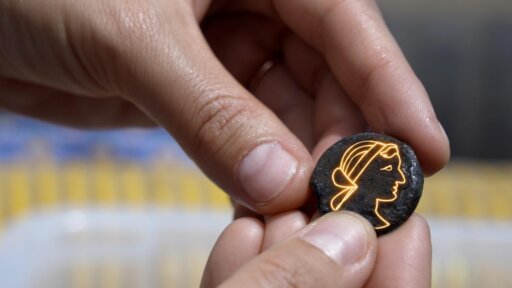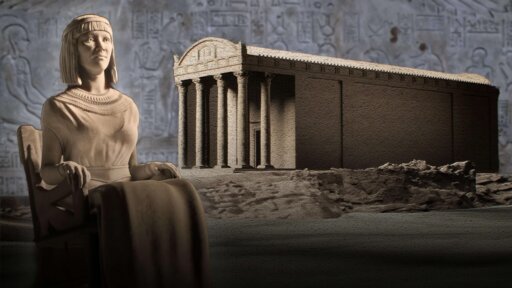After 30 years excavating Alexandria’s harbor, Franck Goddio’s team uncovered a rare temple linked to Cleopatra. But its appearance remained a mystery. Then they found tiny lead tokens, which offered clues to the temple’s façade.
Features



But a much smaller object pulled from the sediment sheds light on the structure of the building.
This relic, just a few millimeters long, depicts a temple, which might be the Iseum.
And its framework is quite unusual.
-Here we have a small amulet, which is extremely interesting because it's actually the temple.
So, we have a miniature representation of the Iseum, with the pink granite columns, and the pediment here.
-We've found a couple of small lead tokens that seem to show the facade of our temple.
And it has a curved roof on both of them.
So, that's quite direct evidence from our excavations.
-This tiny object suggests the shape of the temple.
Analysis shows that the wood could have been beech, which has the flexibility needed for a curved beam.
Piece by piece, Cleopatra's temple is coming together.
But even after three decades, there's still work to be done.
The latest discoveries at the underwater site stretch back 2,000 years, to the construction of the temple.
-From our excavations within the debris field, we've been able to find a whole range of material that enables us to reconstruct something of the decoration of the temple.
-Franck Goddio and his team have reassembled this decorative item, which shows what Cleopatra might have seen when she walked inside.
-It's part of the temple, an interior room.
And we know that this was the cella, the location of the temple's main statue -- which we found -- of a priest carrying a Canopic urn.
Nearby, at the same level in the rubble, several elements like this with these rather lovely cornices were found, and they're quite well preserved.
-The archaeologists were able to bring other design elements from the temple to the surface, including the remarkable mosaics on the temple floor.
These treasures confirm the immense wealth of the site.
-This is all from this year's excavations.
Here, we have pink marble, strips of pink marble that were set into the floor.
This is a royal temple, so of course these are extremely luxurious materials.
Some very beautiful black marble flooring here, too.
So, among the colors are pink, black, white.
These mosaics were without question walked upon by great figures from history -- Ptolemy XII, Julius Caesar, Cleopatra, Antony, and Augustus.
